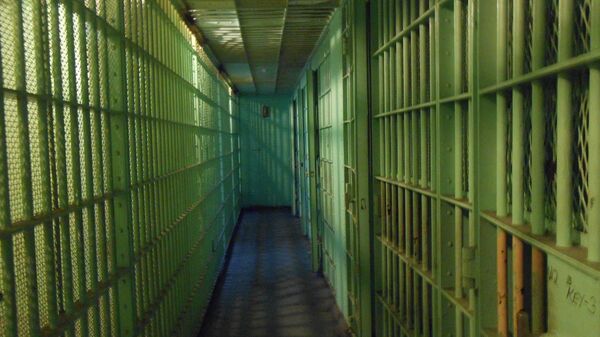HMP Birmingham
Justice Secretary David Gauke took action after receiving a damning report from the chief inspector of prisons, Peter Clarke.
Mr. Clarke, a former commander of Scotland Yard's counter-terrorism unit, said Birmingham Prison — formerly known as Winson Green — had "slipped into crisis."
— Press Association (@PA) 20 August 2018
During an inspection, he found staff asleep or locked in offices, widespread drug use and dilapidated buildings, rats and other vermin and uncollected rubbish.
Mr. Gauke has seized control of the jail from private security company G4S and now has 28 days to come up with an action plan for the prison, which was built in 1849.
Birmingham Prison had 1,269 inmates at the end of the July and had suffered more assaults — 1,434 — than any other British jail last year.
Mr. Clarke's report found "squalor, violence and the prevalence of drugs and looming lack of control."
— Richard Burgon MP (@RichardBurgon) 20 August 2018
Only days before his inspection an arson attack had destroyed nine cars owned by prison officers, including two owned by the inspectors.
"I was astounded that HMP Birmingham had been allowed to deteriorate so dramatically," he wrote in a letter to Mr. Gauke.
G4S has been running the prison since 2011 but in 2016 inmates rioted in protest of the conditions.
Birmingham's greatest claim to fame was that on New Year's Day in 1995 serial killer Fred West had hanged himself there while awaiting trial.
HMP Liverpool
In January 2018, inspectors at HMP Liverpool said conditions were the "worst they'd ever seen."
Inmates lived among dirt, litter, rats and cockroaches, occupying cells "dangerous to live in."
— Warrior Yoga ॐ (@WarriorYoga82) 15 August 2018
The prison was opened in 1855 and was known as Walton Jail. Among its more illustrious inmates over the years were writers Robert Tressell and Brendan Behan.
In 1964 the last man to be hanged in Britain — Peter Allen — was executed at Walton.
The jail was renamed Liverpool Prison a decade ago, but by January 2018 many prisoners were living in "squalid conditions."
Great couple hours in Walton jail playing charity football tournament for great campaign #NoMoreKnives well done all the lads involved #OurCity
— Rocky Fielding (@Rocky87Fielding) 15 August 2018
Half of the inmates were locked up all day, many for up to 22 hours, a third felt unsafe and many said they had been victimized by the staff.
There was also an alarming rise in incidents of self-harming.
HMP Lewes
In October 2016 staff at HMP Lewes were forced to "retreat to safety" when inmates went on a "rampage" that led to cells and offices being severely damaged.
Quelling the outburst required the help of a national response unit.
— Haven Distribution (@Haven_Distrib) 26 May 2018
Prison Officers Association chair Mike Rolfe blamed the incident on "poor management" and a "severe shortage" of staff, noting only four officers had been patrolling the wing in question.
The cellblock riot caused 230,000 pounds ($294,000) worth of damage at the prison in East Sussex.
Last month Ross Macpherson, 28, and Steven Goodwin, 28, were convicted of criminal damage.
Their trial at Hove Crown Court heard that Macpherson had threatened to gouge out the eyes of prison guards with a pool cue during the disturbance.
HMP Bedford
In November 2016 up to 250 inmates mutinied at HMP Bedford, breaking into staff areas and ransacking equipment and files.
In order to quell the uprising, up to 60 inmates had to be removed.
— National Chair POA (@POAnatchair) 18 March 2018
Two wings were "totally trashed" at a cost of 1 million pounds ($1.28 million).
A report by Bedford's independent monitoring board found the riot was caused by "disgraceful conditions" including a failure to provide basic items such as soap, cleaning materials and toilet paper.
Prisoners were being locked up for 23 hours a day, and only 55 out of a total of 110 guards were available for duty.
HMP Swaleside
In December 2017 another riot beset HMP Swaleside in Kent, again requiring special assistance.
Reports at the time suggested that tensions between the inmates and prison officers had reached a breaking point after longstanding prison staff were replaced by young and inexperienced workers, and budget cuts significantly reduced visiting hours, cutting off inmates from their families.
I— Daniel Locke (@DanielULocke) 17 May 2018
Doors, windows, walls and CCTV cameras at the category B prison were destroyed during the riot.
Eighteen inmates are due to go on trial next year, accused of "engaging in conduct intended to further a common purpose of overthrowing lawful authority" and damaging property at Swaleside.
HMS Inverness
In March this year a report by Scotland's chief inspector of prisons, David Strang, said Inverness Prison was "no longer fit for purpose."
The Press & Journal (@pressjournal) 10 January 2018
HMP Inverness, Scotland's smallest jail, was opened in 1902, but Mr. Strang said it was overcrowded and disabled access was a problem.
He also raised concerns about a "very high turnover" of senior officers at the jail.
The prison, which is also known as Porterfield, was designed to accommodate 98 prisoners.
The Scottish Prison Service is planning to replace the prison and in October last year planning permissions were granted for a new jail near Inverness Retail Park.


